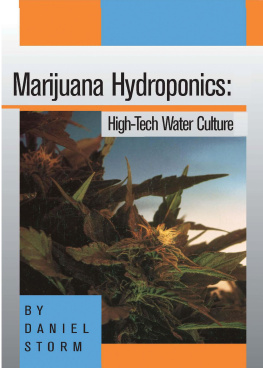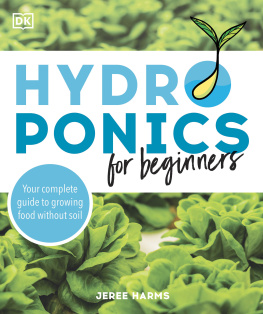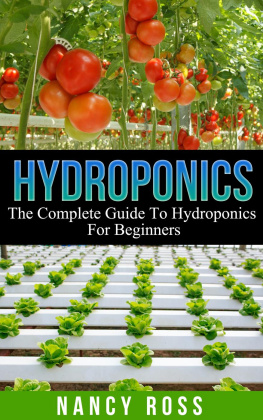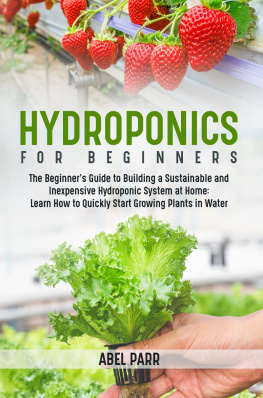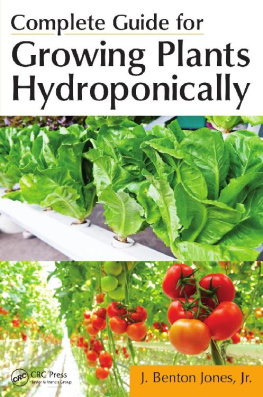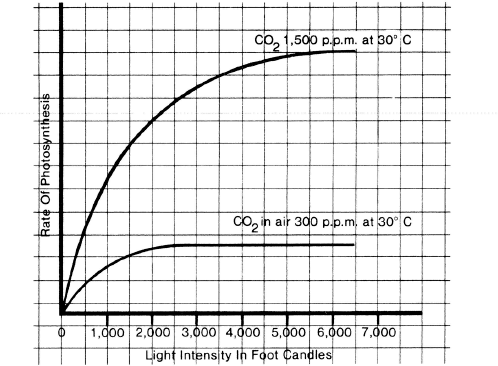
MARIJUANA HYDROPONICS
HIGH-TECH
WATER CULTURE
Daniel Storm
Ronin Publishing, Inc.
Berkeley, California
PUBLISHED BY
RONIN Publishing, Inc.
PO Box 3436
Oakland CA 94609
www.roninpub.com
ISBN: 978-0-914171-07-2
ISBN: 0-914171-07-0
Copyright 1987 by Daniel Storm
All rights reserved. No part of this book may be reproduced or transmitted in any form or by any means, electronic or mechanical, including photocopying, recording, or by any information storage and retrieval system, without written permissin from the author, except for the inclusion of brief quotations in a review.
Printed in the United States of America
Project Editor | Sebastian Orfali |
Production Manager | Ginger Ashworth |
Word Processing | Judith Abrams |
Cover Design | Brian Groppe |
Illustrations | Jay Vea |
Photographs | Daniel Storm |
Dedication
I would like to thank Bill, Bob, and George for their assistance. Special thanks to Uncle Norm for his technical and editorial advice. Dedicated to Kathy and Kyle, whose constant love and lack of support made this work possible, and to the memory of Diane.
NOTICE TO READER
The material in this book is presented for information and reference under the provisions of the First Amendment of the Consitution of the United States. The author and publisher advise against any application of the procedures described whenever they involve breaking the law or pose any hazard to persons or property. The reader is cautioned that the use of drugs can be hazardous to health. The author and publisher do, on the other hand, encourage the support of NORML in its efforts to secure passage of fair marijuana legislation.
Table of Contents
Preface
This book provides information about growing marijuana and other green plants artificially. That is, without the use of natural environmental factors such as the sun, wind, rain for water and humidity, and naturally occurring mineral nutrients.
The water culture presented here is nothing new; it is simply applied with technology that is available today. With this technology, specifically computers, growing plants artificially with the water culture method will become much more economical and efficient.
Along with the water culture technique, details on construction, assembly, and operation procedures for the completion of growth systems, required for controlling artificially plant growth, is provided.
This work also contains basic background information on botanical aspects necessary for vigorous, healthy plant growth.
Cultivation and possession of marijuana continues to be illegal under federal law. However, a number of states have provisions approved by the voters for the cultivation of medical marijuana. The methods described in this book can be utilized in such a manner. Nonetheless, even in states were medical cultivation has been approved, it is still a federal crime and the reader is cautioned to consult an attorney about the status of marijuana cultivation in his or her area before commencing.
Light
The size of marijuana plants, their potency, even the time when they produce buds all these are dependent on the light they receive: its quality, intensity, and duration. This chapter explains how the photoperiod influences the onset of flowering, and how it may be used to induce early budding.
Chlorophyll
Before photosynthesis can begin, radiant energy (i.e., light) absorbed by the plant is converted into chemical energy. This energy transfer occurs within the unique cellular structures called chloroplasts. The basic components of chloroplasts are individual membranous sacs, containing fats, proteins and pigments.
Light-absorbing pigments are attached to the membranes of the sacs. There are several types of pigments; each absorbs different wavelengths of light. The most important plant pigment is chlorophyll. In green plants, chlorophyll occurs in two forms: chlorophyll a and chlorophyll b. Both chlorophyll molecules absorb red and blue wavelengths of light. Green wavelengths of light are reflected, giving plants their characteristic color.
Photosynthesis
When sunlight falls on the leaves of green plants, the illuminating energy triggers the process of photosynthesis. Along with light and chlorophyll, photosynthesis involves carbon dioxide (CO2) and water (H2O). According to current theory on the mechanism of photosynthesis, the chemical energy produced by chlorophyll from visible light is sufficient to split the water molecules apart. This provides units of hydrogen (H), and hydroxide units (OH). The hydroxide units combine with carbon dioxide absorbed from the air, to produce carbohydrates necessary for plant growth. The hydroxide units also become the source of oxygen molecules, which (along with water vapor) are released back into the atmosphere. Here is a summary of the photosynthesis reaction:
Photorespiration
In the chlorophyllous tissues, both respiration, which occurs in darkness, and photorespiration, which occurs in the presence of light, are carried on continuously throughout the life cycle of the marijuana plant. The reaction involved in respiration is the reverse of that involved in photosynthesis. Carbohydrates produced during photosynthesis are broken down by oxygen, releasing carbon dioxide and water back into the atmosphere, and supplying energy for other plant growth processes. The reaction mechanism for both respiration and photorespiration is:
Photorespiration proceeds at a slightly higher rate than does respiration. A measure of the rate of photorespiration is called the carbon dioxide compensation point. When this point is reached, the amount of carbondioxide .)
Light Intensity
Along with the increase in carbon dioxide concentration, an increase in the intensity of available light reduces the inhibitory effects of photorespiration. The photosynthetic process is said to be light-saturated when the ).
Figure 1.
Shows an increase in the rate of photosynthesis with an increase in the carbon dioxide concentration and light intensity.
To satisfy these lighting requirements in a growth chamber, high-intensity discharge lamps must be used. A recommended lamp will be described at the end of this chapter.
Photoperiodism
For most types of plants there is a direct relationship between the lengths of the day and night periods and the time in the plants life cycle when flowering occurs. This relationship is called the photoperiod. This section will deal with the photoperiodic responses of cannabis, which is a short-day plant. (There are three kinds of photoperiodism in plants. Short-day plants will flower with short days and long nights. Long-day plants will flower with long days and short nights. When plants are day-neutral, the daylength does not have any effect on flowering.)
Next page
